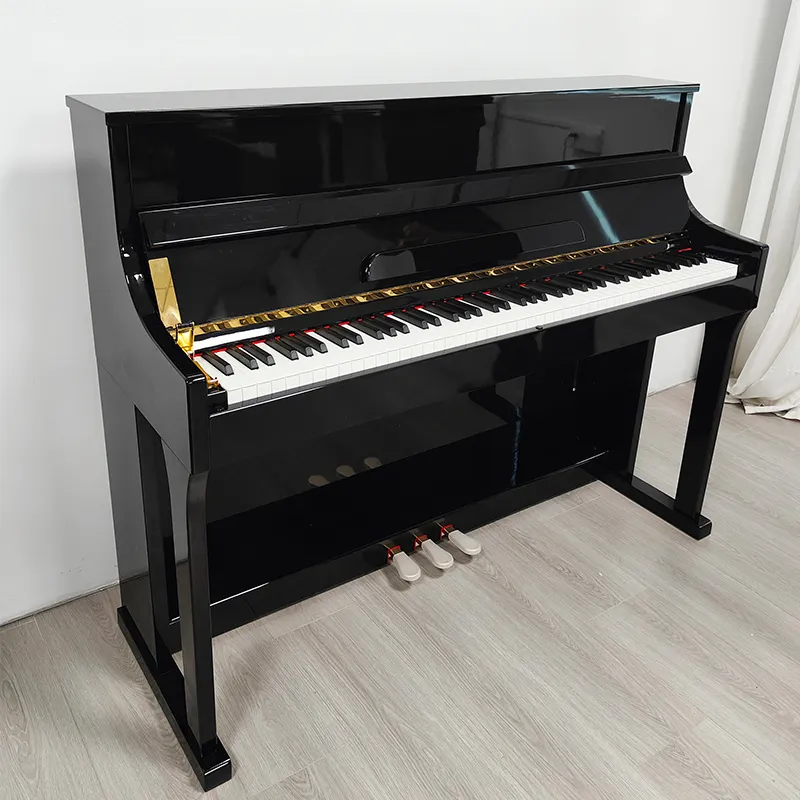When stepping into the world of music, choosing the right instrument lays a strong foundation for future success. For both beginners and intermediate players, the digital piano stands out as a popular and practical choice. Offering versatility, affordability, and a broad range of features, a digital piano can meet the evolving needs of aspiring musicians while staying within budget. However, the variety of models and brands on the market can be overwhelming. By understanding key considerations, learners can make informed decisions that enhance their musical journey.
One of the most critical aspects to examine when choosing a digital piano is the sound quality. A good digital piano uses high-quality samples from acoustic grand pianos, often layered to respond to touch dynamics. Some models offer multiple velocity layers, reverb settings, and resonance modeling that mimic the feel of playing a real acoustic piano. For beginners and intermediate players alike, sound realism keeps practice sessions engaging and motivating.
A digital piano should replicate the touch and feel of an acoustic piano as closely as possible. Weighted keys and graded hammer action are essential features, especially for learners developing finger strength and technique. Touch-sensitive keys that respond dynamically to pressure help players develop proper control and expression. This tactile feedback also ensures that transitioning to an acoustic piano in the future will be smoother.
Digital pianos often come equipped with features that cater specifically to beginners. These can include metronomes, dual mode (for teacher-student practice), onboard lesson functions, and light-up keys. Built-in learning tools can significantly speed up the initial learning curve and make the practice process more interactive. As players progress, these tools serve as a helpful reference rather than a crutch.
For intermediate players, polyphony becomes an important factor. Polyphony refers to the number of notes the digital piano can produce simultaneously. A model with at least 128-note polyphony ensures that complex passages, layered sounds, and sustained notes do not get cut off. Additionally, having a variety of instrument voices can expand creative possibilities, encouraging exploration and composition.

Digital pianos come in several form factors. Console models are designed to resemble traditional upright pianos and are ideal for home use due to their aesthetic appeal and built-in speakers. Portable models are lighter and more compact, suitable for those who need mobility or have limited space. Beginners who practice at home may prefer console styles, while intermediate players who perform or travel might lean toward portable alternatives.
Pedals play a significant role in expression and technique. Most digital pianos include at least one sustain pedal, but advanced models may offer all three standard pedals: sustain, soft, and sostenuto. Connectivity features like USB, MIDI, Bluetooth, and headphone jacks allow integration with recording software, online lessons, and silent practice—an essential benefit for shared living environments.
When investing in a digital piano, it's wise to consider the manufacturer's warranty and customer support options. A solid warranty provides peace of mind, while accessible support services ensure technical issues don’t interrupt practice. Brands that prioritize customer satisfaction and offer helpful resources often build loyalty among users.
Many companies provide models with upgrade paths tailored to growing skills. Whether it’s adding a better stand, high-quality headphones, or software packages, these options make a digital piano feel like a long-term investment. Beginner models with modular upgrade options can bridge the gap to intermediate needs without replacing the entire instrument.
Budget plays a crucial role in the selection process when choosing a digital piano. With a wide range of models available on the market, prices can vary significantly depending on the brand, features, and build quality. Setting a realistic budget based on your specific needs and intended use is essential to making an informed decision. For beginners or casual players, entry-level digital pianos provide excellent value, offering essential functions such as weighted keys, built-in metronomes, and headphone compatibility without overwhelming complexity. These models are perfect for foundational skill-building and home practice. On the other hand, mid-range digital pianos are designed for those who are progressing in their musical journey. They typically include more advanced sound engines, greater polyphony, improved key action, and additional connectivity options. These features cater well to intermediate or even semi-professional players who require more nuanced control and versatility. By aligning your budget with your playing goals and long-term expectations, you can better identify the digital piano that offers the best combination of performance, features, and value.
Cost should be carefully balanced with the features that are most relevant to the player’s individual goals and playing style. While it may be tempting to assume that a higher price tag equates to superior performance, this isn’t always the case—especially if many of the advanced features end up being underutilized. For instance, paying extra for multiple sound banks or complex recording tools might not be necessary for a player focused primarily on classical practice. On the other hand, someone involved in music production or stage performance might find these features indispensable. A thoughtfully selected digital piano should support the musician’s current skill level while also providing room to grow, ensuring that the investment remains valuable over time. The key is to choose a model that enhances the learning or performance experience without including unnecessary extras that inflate the cost without adding meaningful benefit.
Most beginners start with an 88-key digital piano to simulate the full range of an acoustic instrument. This choice promotes better hand placement and long-term adaptability.
Weighted action helps mimic the feel of an acoustic piano, making it an essential feature for learning proper finger technique and dynamic control.
Yes, many digital pianos offer USB or Bluetooth connectivity that allows integration with various music education apps, making learning more engaging and interactive.
Unlike acoustic pianos, digital pianos do not require regular tuning. This is one of the major conveniences of owning a digital piano.